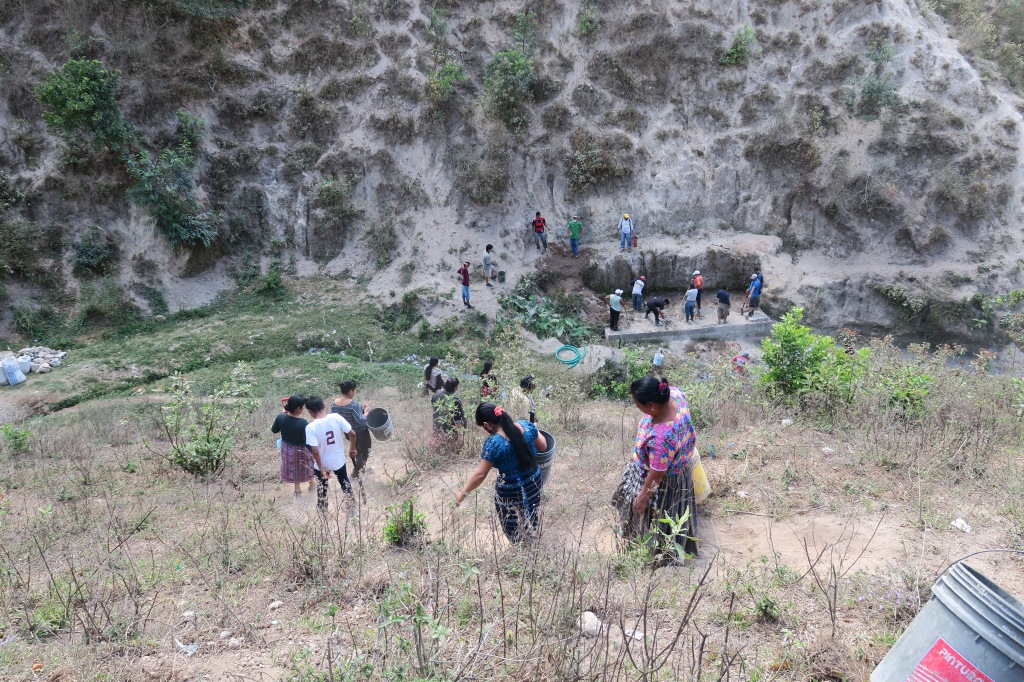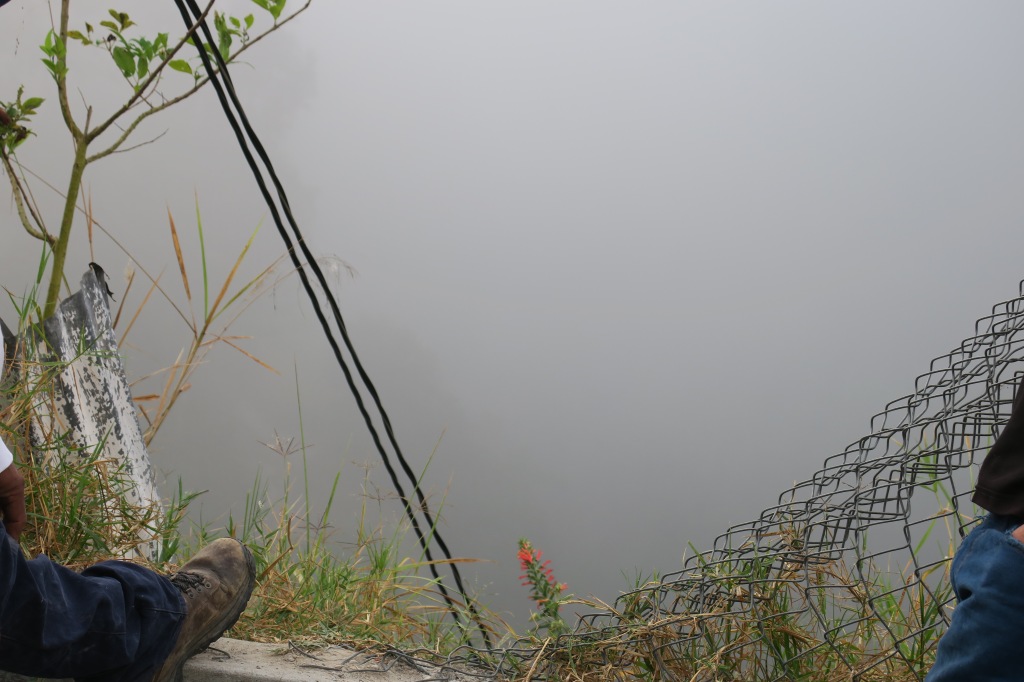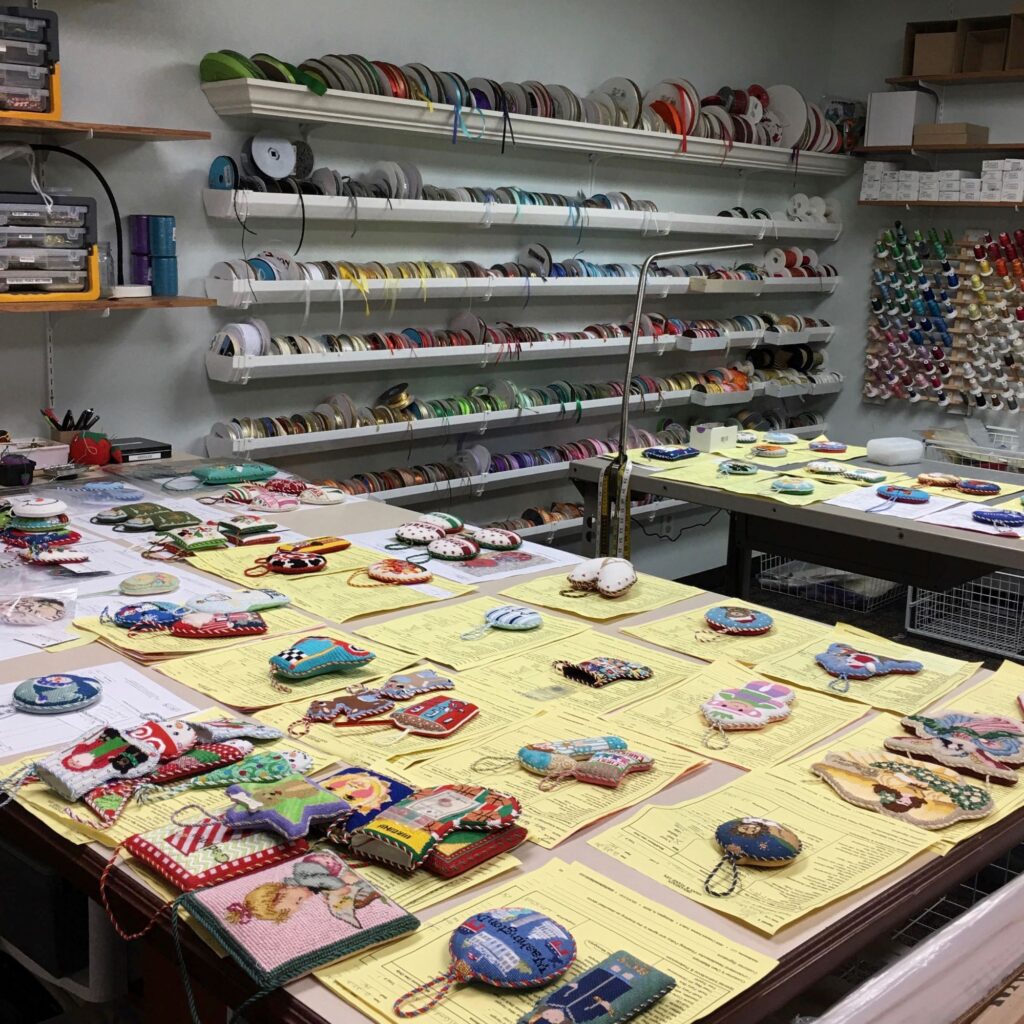By Mel Ford, Department of Anthropology, Rice University Editorial Note: This post is part of our series highlighting […]
By Mel Ford, Department of Anthropology, Rice University
Editorial Note: This post is part of our series highlighting the work of the Anthropology and Environment Society’s 2022 Roy A. Rappaport Prize Finalists. We asked them to outline the argument they made in their submission and to situate their work in relation to the field of environmental anthropology.
ABSTRACT: Forested canyons expand forty-two percent of Guatemala City’s municipal terrain. Today they are host to clandestine landfills and informal settlements that perch alongside cliffs, slopes, and riverbanks. Presented in the form of a glossary, this essay is a close examination of the social ecology of one ravine community, documenting their labor over several months in their success to provide running water for themselves by building a well at the bottom of their ravine. The terms presented in this text are chosen, and elaborated upon, from my field research laboring with two ravine settlement communities in Guatemala City’s urban sprawl as they built a communal well around a natural spring in the absence of public utilities and documented environmental risk through a residential survey, respectively. While ravines are easily identifiable from a distance, the voids produced between their slopes contain rivers, cliffs, stairs, ditches, hills, and more that importantly distinguish qualities of life between settlement communities. Drawing from political ecology, critical geography, and architectural theory, I argue that marginalized conditions of life within ravines necessarily de-standardize the figure of the ravine itself in favor of more precise terminology that defines, clarifies, and communicates each ravine’s distinct geosociality. Such features within ravines point towards senses of direction, danger, and desire and, as I examine, are landmarks of Guatemala’s political economy, material ecology, and wartime history. I offer the glossary as an unenclosed heuristic that embraces this nonscalability of difference in pursuit of more textured descriptions for the productions of place.

Fig. 1: A photo of the community workday (faena), where Sector C of San Julián works on hollowing out their second well for maintenance inspection. Photo by author.
Ladera (slope): The general slope or inclined surface of a given relief.
1. It is a late Sunday evening as I reach the edge of the San Julián settlement community, located on a maseta1?1 midway down a steep ravine that divides Guatemala City and the smaller municipality of Chinautla. Sunday evenings are typical times of rest, but Sector C resident Dońa Tere has notified me that the community council couldn’t wait any longer to call for another meeting—finally, running water has reached their homes. Chinautla is the traditional region of the Pocomam Maya peoples. Although the name Chinautla derives from the Pokomam word for hot springs (aguas calientes), all nine sectors of the community haven’t had running water for nearly twelve years.
Landmarked Definitions is a close examination of the social ecology of the San Julián community, documenting their labor over several months in their success to provide running water for themselves by building a well at the bottom of their ravine. The text written above is an ethnographic definition excerpted from a longer edition of what I have titled, “A Glossary Made by Ravines.” This glossary first emerged as a note-taking methodology, and it quickly developed into a careful heuristic that facilitated my understanding of ravines as conscientiously architected landforms.
Like with other ravine communities, my research alongside the residents of San Julián began as one phase of a larger research project that examines a sweeping urban conservation movement for the ravines (barrancos) of Guatemala City. Today, ravines are host to more than 350 clandestine landfills and informal settlements that perch alongside cliffs, slopes, and riverbanks. In the 20th century, a post-natural disaster housing crisis amidst a thirty-year long civil war (1960-1996) and genocide (1981-1982) by state government and the country’s land ruling elite were driving factors in rural to urban migration. Settlements, and their vernacular constructions, have unevenly taken place at different times and under different regulations—a consequence of neoliberal urban development via the privatization of public goods and services. At the turn of the twentieth century, the speculation of ravines as sites for the reorganization of the urban fabric bloomed under the rhetoric of “securing of the city,” in response to a concentration of violence, infrastructural precarity, and “desclasamiento”2 that surfaced “from the failure of the authoritarian state’s postwar structural adjustment policies and plans for development” (Camus 2011, 49 in Lewis O’Neill and Thomas 2011)?.
Recent city planning regulations conceptualize ravines as homogenous landforms with similar geographic conditions, emphasizing them as one unique landscape for widespread conservation intervention and the expansion of safe, accessible public space. From 2019-2021, I documented moments of encounter between conservation initiatives and ravine settlement communities spread across Guatemala City and its greater metropolitan area (AMCG). As is the case with San Julián, I learned how to deduce the messy entanglements of planning law, conservation practice, design intentions, and urban history that interfere with the possibilities for a simplified, binary explanation about the relationship between the built and natural environment, the urban population and the state, and the ravine and the city.

Fig 2. Wiring sloping down into the ravine to provide electricity to the well’s water pump. Photo by author.
While this essay examines in detail certain moments throughout the making of the well, it is by no means a comprehensive nor linear recounting of the process. Rather, its narrative structure is spatialized by the anatomy of a glossary. Indexed terms are expanded into ethnographic vignettes that landmark “natural” sites within the ravine as politically produced topographies. These landmarks, I argue, expose notable topographies as coordinates graphed at the intersection of nature, economy, and politics. Scholars agree that terrain is not a stagnant nor monolithic a priori description of earth but rather a strategic and processual perspective with political and material history (Elden 2010; Gordillo 2004). Analyzing the material politics of landmarks, in this way, offers documentation and a clarification of how and why ravines are more than just accidentes geográficos, landforms configured by a complex interplay of political economy and material ecology. Landmarks show that ravines—despite their physical unity and hegemonic conservation discourse—are heterogenous and particular landforms whose “geographies of difference” can be attributed to a culmination of years of institutional neglect, corruption, and defunding within local government; the historic displacement of poor and indigenous communities from healthy lands; and the necessary collective maintenance and transformation of ravines by settlement community members themselves (Harvey and Braun 1996; Radcliffe 2015).
Although the glossary presented is focused only on the case of San Julián, I envision its expansion as a dynamic text that responds to what Marilyn Strathern has identified as a “narrative problem” of writing representation where “complexity is culturally indicated in the ordering or composition of elements that can also be apprehended from the perspective of other orders” (Strathern 2004: XV). All vignettes reference other terms written in the glossary, suggesting to the reader the need to move across the text in a referential manner for more contextual insight into the conditions of San Julián’s water dilemmas. As an ethnographic heuristic, the glossary joins a growing interest in lexicons, encyclopedias, and other organizational schemas for ethnography that “offer a way of pluralizing perception…and thereby open up the range of possible action” (Howe and Pandian 2020, 20; Escobar 2018). By associating the reflective and open-system design of a glossary’s textual arrangement with landmarks, this essay presents the “submerged perspectives” (Goméz-Barris 2017) of settlement communities in the ravines in Guatemala City.
plateau
 ?Manuela Camus defines “desclasamiento” as the “loss of class distinction” (2011, 49). In her essay, Camus documents how modernist urban housing projects of the twentieth century declined under histories of racial discrimination and the sharp increase in economic inequality. Urban insecurity has come to characterize postwar Guatemala City in terms of “desclasamiento,” or in this case, the collapse of a clearly defined urban middle class that has left many residents “question their place in the world as well as their futures” (64).
?Manuela Camus defines “desclasamiento” as the “loss of class distinction” (2011, 49). In her essay, Camus documents how modernist urban housing projects of the twentieth century declined under histories of racial discrimination and the sharp increase in economic inequality. Urban insecurity has come to characterize postwar Guatemala City in terms of “desclasamiento,” or in this case, the collapse of a clearly defined urban middle class that has left many residents “question their place in the world as well as their futures” (64).  ?
?












